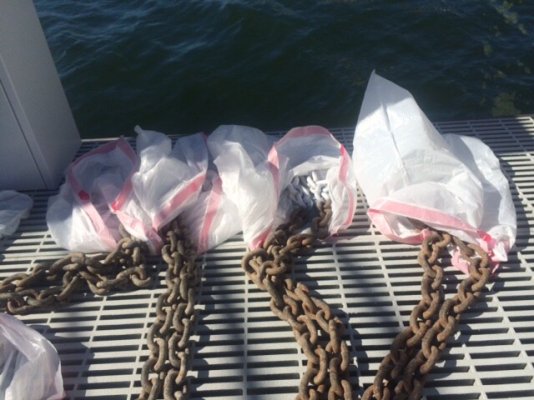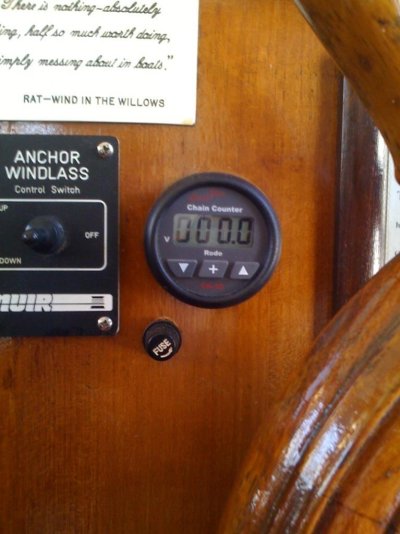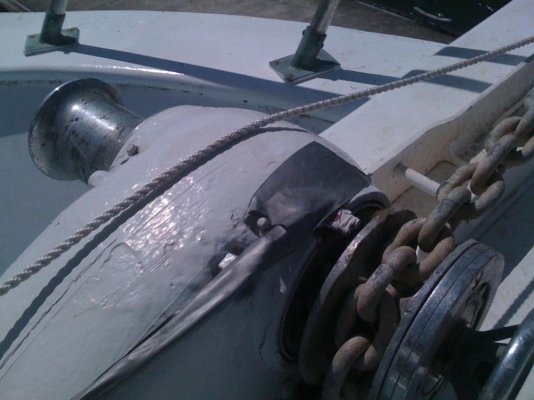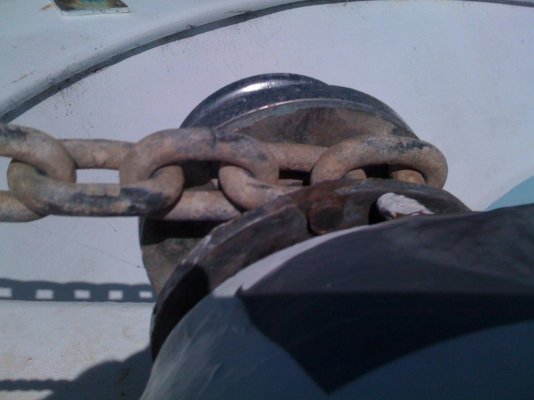I never ceased to be amazed when this subject comes up, because you US/Canadian types are always into the high-tech stuff asap when it comes to radios, GPS, AIS, generators, zircon, auto-pilots - you name it. Especially when it is something that makes anchoring or sailing life easier. Yet you persist with this antiquated way of marking anchor chain....
Well, I can't speak for anyone else, but lowering a chain off the front end of a boat is about as low-tech and simple a process as I can think of. You step on a pedal and the chain goes out, you step on a different pedal and the chain comes back.
I have nothing against the concept of an anchor counter, and I can see how if one operates their windlass remotely from an upper or lower helm it could be handy. But for people like my wife and I who prefer to operate their windlass at the windlass with the chain going out and coming in right next to us, an electronic chain counter is a solution looking for a problem.
By watching and feeling (by hand) how our rode acts during the setting process we get a lot of very useful information. Information we would not get if we were back at a helm station with no view of the chain at all and no ability to feel what was going on at the end of it.
Tying a wire tie every ten feet costs us, what, a couple of dollars maybe? It's so dirt simple to count the ties to determine how much chain we're letting out, our dog often comes forward and does it for us just for something to do.
Use technology to see what's around us in the fog? Absolutely. Use technology to count chain falling off the front of the boat? Don't really see any value in that. Not when I can look at a two-cent wire tie and say "Ten." And then when I see the next one say, "Twenty."
Or if I'm lazy and this proves to be too intense an undertaking I can ask the dog to do it.




 We probably paint more chain this way than at the dock. After several months of anchoring Lena says she can't see the first color. On deck with some plastic bags, it's real easy to remark/remark.
We probably paint more chain this way than at the dock. After several months of anchoring Lena says she can't see the first color. On deck with some plastic bags, it's real easy to remark/remark.




